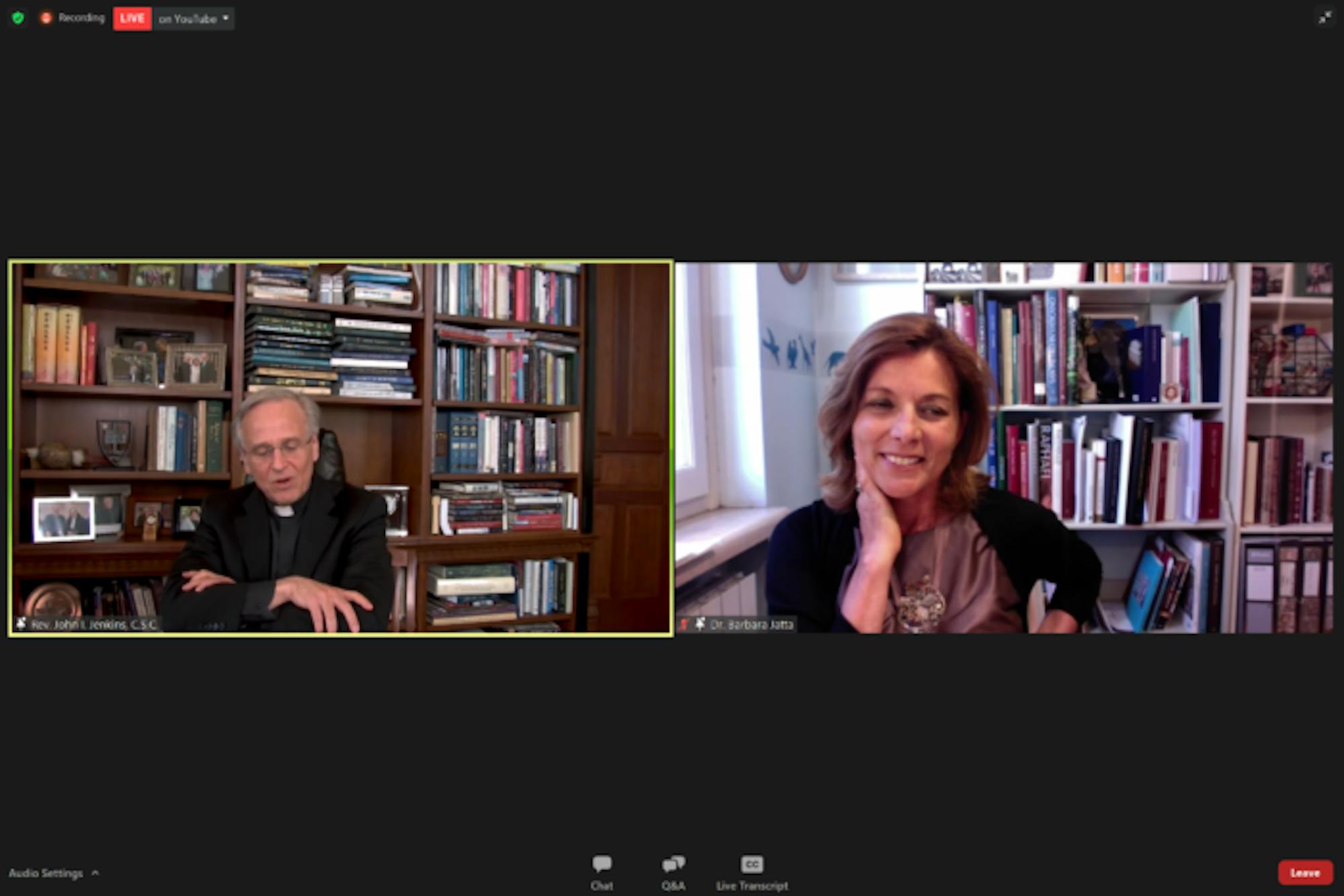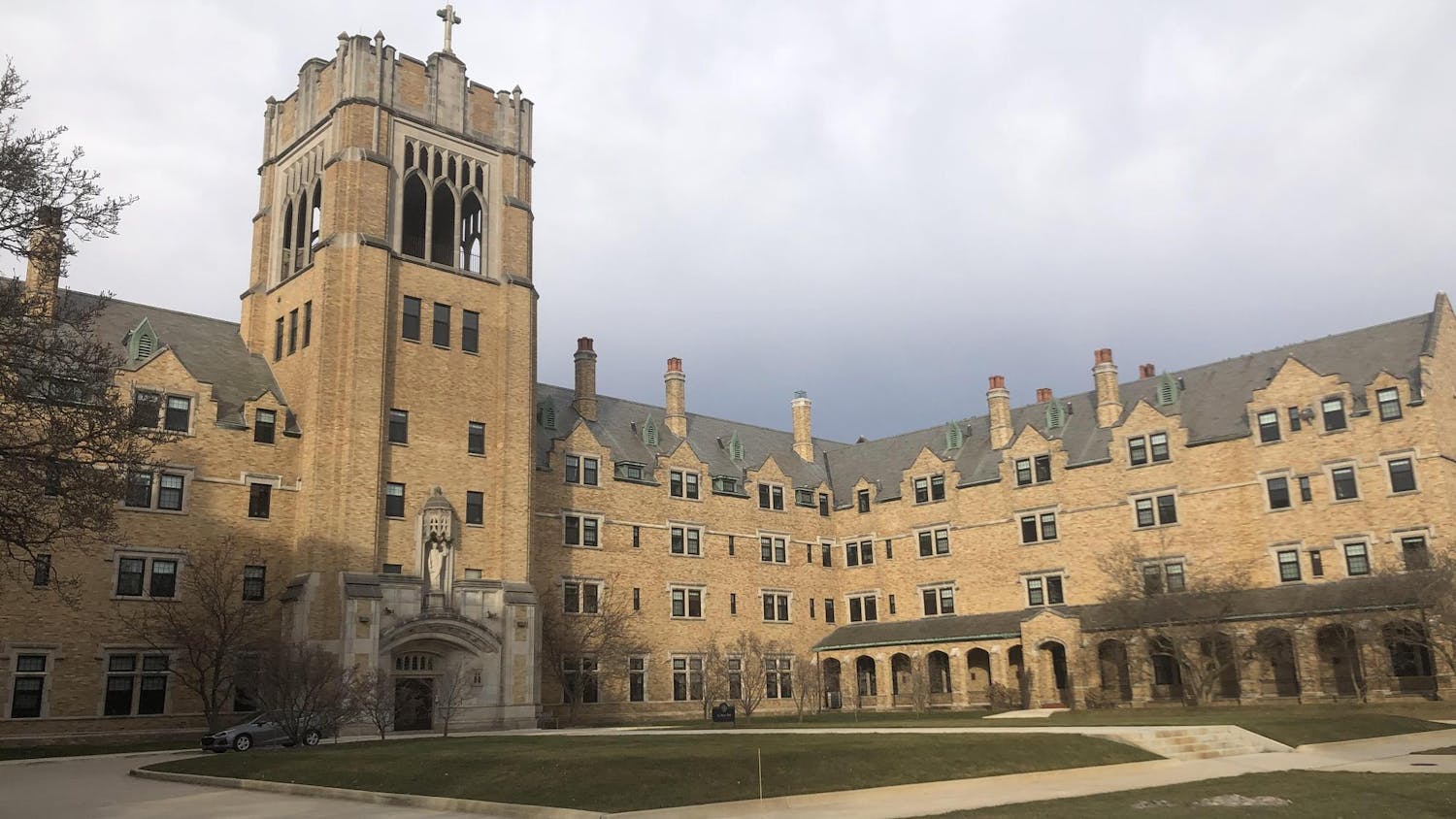The University’s Nanovic Institute for European Studies hosted its yearly Keely Vatican Lecture on Wednesday. Director of the Vatican Museums Barbara Jatta spoke at the event in a talk titled “The Vatican Museums: Future Perspectives.”
Jatta’s lecture covered the newly restored artworks of Renaissance painter Raphael and the management of the Vatican Museums during the pandemic.
Notre Dame president Fr. John Jenkins gave opening remarks to introduce Jatta, who was nominated to be director of the Vatican Museums by Pope Francis in 2016. Jatta oversees a staff of hundreds of curators, restorers and other museum professionals, Jenkins said.
Jatta started her lecture by talking about the mission of the Vatican Museums.
“The mission of the Vatican Museums is to make known, preserve and share the extraordinary legacy of culture, history, beauty and faith that the Roman Pontiffs have collected and preserved for centuries,” Jatta said.
Jatta described the importance of Raphael in the Vatican.
“Raphael, a universal artist, provided the supreme model of beauty to Western purity and civilization,” Jatta said. “To fully understand Raphael, it is necessary to come to the Vatican.”
The Vatican Museums are the holders of the most beautiful and significant painting cycles of Raphael, Jatta said. Raphael was involved in conservation and restoration of antiquity, which the museums continue to do today.
“We consider Raphael as the person who started the conception of conservation, restoration and of preserving our heritage,” Jatta said.
The management of the museum has been difficult during the pandemic, according to Jatta.
“We were closed for about three months and when we reopened in June 2020, we decided to reopen on the name and image of Raphael,” Jatta said. “We wanted to give a positive celebration to the 500 year anniversary of his death in 1520, or the ‘Sanzio’ year.”
The Sanzio year involved new restorations from many art pieces, including the altar piece “The Coronation of the Virgin Mary,” the painting “Leo X and Raphael in the Sistine Chapel,” the courtyard of the Bramante and the Constantine Room, which has been in restoration since 2014. The Constantine room depicts the life of Constantine, who legalized Christianity in the Roman Empire, on its four walls. Raphael was involved in the initial sketches of the paintings in the Constantine Room, but died before the room was finished.
Jatta continued by talking about the rethinking the future of the Vatican Museums in light of the current pandemic.
"We have to rethink and restart in a different way but we are sure we must go on,” she said.
The number of visitors has decreased due to the pandemic by almost 80% Jatta said, but there has been a shift in who is visiting the Vatican Museums. Before the pandemic most of the Vatican visitors were foreign, now over half are Italians.
Jatta is optimistic about the ability for the Vatican Museum to bounce back when the pandemic is over.
“It’s a complex issue but we will start again and get through it,” she said. “Even as things are changing and as exhibition numbers are low, we are still working on our mission to present, preserve and share the legacy of culture, history, beauty and faith. ”
In the Q&A session, Jatta responded to a question about how she sees the linkage of beauty and the Catholic Church.
“Pope Francis speaks about how to use the legacy of beauty to bring people into the faith,” Jatta said. “In the current lock-down times the use of the virtual Vatican tours and pictures has gone up 200 and 300% but I am convinced that a real visit of our collections and being alone with the works of heartfelt art can cause beauty to arrive at the souls of the visitors.”
Jatta concludes the event by referencing Pope Francis’ speech to the Ambassadors of the Holy See in 2020.
“He mentions the Raphael Years and uses Raphael as a model of the time of harmony between art, history and faith found together in perfect harmony,” she said. “I was very happy that he was aware of the importance of Raphael and universal harmony.”
Vatican Museums director Barbara Jatta addresses University community in annual Keely Vatican Lecture
In a lecture sponsored by the Nanovak Institute for European Studies,
In the annual Keely Vatican Lecture sponsored by the Nanovic Institute for European Studies, director of the Vatican Museums Barbara Jatta spoke about conservation efforts by Raphael and how the Museums handled the pandemic.









